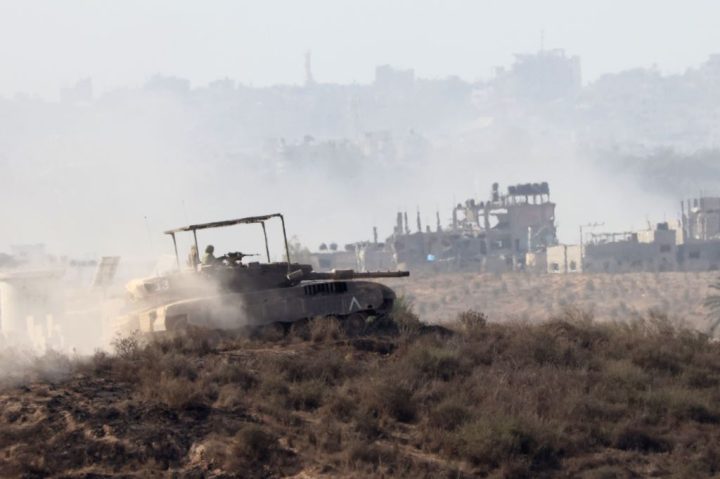As the IDF continues to close in on Hamas in the heart of Gaza, the US announced that Israel will implement daily four-hour ‘humanitarian pauses’ in fighting in the north of the strip. Hours after the announcement yesterday, during a press conference, the Israeli defence minister Yoav Gallant spoke rather differently about the pauses. He stated that Israel would not stop the fighting against Hamas until all the hostages held by the group had been returned. Only then could proper humanitarian pauses go ahead.
The inconsistent messaging from the American and Israeli sides regarding these humanitarian pauses reflects the American administration’s frustration with Israel’s refusal to pause the fighting. The US wants pauses that will allow for more humanitarian aid and enable more Palestinian civilians to get to safety. They also believe that Hamas will be more inclined to make concessions about release of Israeli hostages if the pauses go ahead.
Pauses without any clear concessions from Hamas are also extremely unpopular with the Israeli public
Israel has made it clear that a full ceasefire will not happen. It was also reluctant to agree to any pause, at all but eventually bowed to American pressure. This was despite its concerns about a loss of momentum in the fighting against Hamas, and its hope that, as the IDF continues to apply pressure on Hamas, they will be more likely to agree to the release of hostages.
Pauses without any clear concessions from Hamas are also extremely unpopular with the Israeli public, hence the vagueness of Israeli officials. The IDF spokesman Rear Admiral Daniel Hagari described them as ‘tactical pauses’ that are limited both in time and also geographically to specific neighbourhoods. Outside those areas, IDF manoeuvres will carry on.
Israel can certainly make use of these pauses, should they enact them. In the last few days, tens of thousands of Palestinian civilians have moved through the humanitarian corridor extending from northern Gaza to the safer southern area.
The IDF has urged civilians to leave for their own safety, while Hamas has tried to get them to remain in order to use them as human shields. A higher number of civilian casualties additionally serves Hamas because it places Israel under increased international criticism and pressure to end the war. When persuading civilians to stay didn’t work, Hamas started blocking them from leaving by setting up road blocks and taking away means of transportation. There have also been reports that Hamas has opened fire on those trying to escape.
Fewer civilians remaining in northern Gaza will help the IDF advance its fighting by giving the army more freedom to use greater fire power without worrying about civilian casualties. The exodus of Palestinians therefore places Hamas in a more dangerous position. The IDF is aware that terrorists may try to take advantage of the situation by embedding themselves amongst the civilians fleeing the area. In his press conference, Gallant said – vaguely – that Israel employs several means to stop this from happening.
The IDF is closing in on Hamas’s ‘military quarter’ where its main infrastructure is, including their reported headquarters under the Al-Shifa hospital. Several high ranking Hamas commanders have been killed, limiting the organisation’s command and control capabilities.
Although Hamas is showing no signs to giving up, it seems to be in trouble. Terrorists are staying hidden in tunnels, emerging only to defend critical facilities – where they are met with fierce firepower. Missile strikes on Israel have also decreased in the past few days.
Hamas’s difficulties are making them increasingly critical of the limited attacks launched at Israel by the Lebanon-based militant organisation Hezbollah. Much to their disappointment, Hezbollah’s leader, Hassan Nasrallah said last week that the war is ‘100 per cent Palestinian, not regional’. Hamas could certainly use Hezbollah’s help – the group is much more powerful and could distract Israel from its efforts in Gaza. However, as pressure mounts in the strip, it is possible that Hezbollah – an Iranian proxy in Lebanon – may change its tune and escalate its attacks.
Israel has also been under attack from the Iranian-backed Houthis in Yemen. They have fired several missiles towards Israel, all of which have been intercepted by American and Israeli systems. Attacks have also come from within Syria, including a drone that hit a primary school in the city of Eilat in the south of Israel. Israel has retaliated, but had the drone killed any of the 5 to 7 year olds that were at school at the time, Netanyahu would certainly have significantly escalated the war against Hezbollah.
Talks of a longer pause in the fighting in return for the release of Israeli hostages, and perhaps a prisoner swap between the two sides, are ongoing. Although, until recently, reluctant to reach a deal, Hamas may feel pressured into one. The future of the conflict is still unpredictable though. All it takes is one successful strike from Lebanon, Syria or Yemen to kill Israeli civilians and ignite a regional war.






Comments